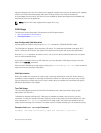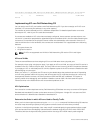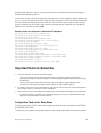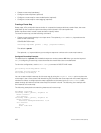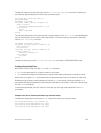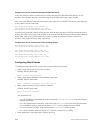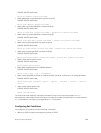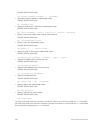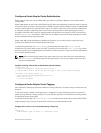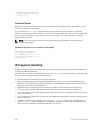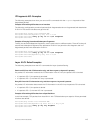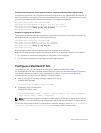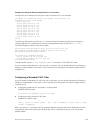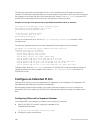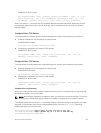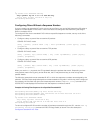
Configure a Route Map for Route Redistribution
Route maps on their own cannot affect traffic and must be included in different commands to affect
routing traffic.
Route redistribution occurs when Dell Networking OS learns the advertising routes from static or directly
connected routes or another routing protocol. Different protocols assign different values to redistributed
routes to identify either the routes and their origins. The metric value is the most common attribute that
is changed to properly redistribute other routes into a routing protocol. Other attributes that can be
changed include the metric type (for example, external and internal route types in OSPF) and route tag.
Use the redistribute command in OSPF, RIP, ISIS, and BGP to set some of these attributes for routes
that are redistributed into those protocols.
Route maps add to that redistribution capability by allowing you to match specific routes and set or
change more attributes when redistributing those routes.
In the following example, the redistribute command calls the route map static ospf to
redistribute only certain static routes into OSPF. According to the route map static ospf, only routes
that have a next hop of Tengigabitethernet interface 1/1
/1 and that have a metric of 255 are redistributed
into the OSPF backbone area.
NOTE: When re-distributing routes using route-maps, you must create the route-map defined in
the redistribute command under the routing protocol. If you do not create a route-map, NO
routes are redistributed.
Example of Calling a Route Map to Redistribute Specified Routes
router ospf 34
default-information originate metric-type 1
redistribute static metric 20 metric-type 2 tag 0 route-map staticospf
!
route-map staticospf permit 10
match interface TenGigabitEthernet 1/1/1
match metric 255
set level backbone
Configure a Route Map for Route Tagging
One method for identifying routes from different routing protocols is to assign a tag to routes from that
protocol.
As the route enters a different routing domain, it is tagged. The tag is passed along with the route as it
passes through different routing protocols. You can use this tag when the route leaves a routing domain
to redistribute those routes again.
In the following example, the redistribute ospf command with a route map is used in ROUTER RIP
mode to apply a tag of 34 to all internal OSPF routes that are redistributed into RIP.
Example of the redistribute Command Using a Route Tag
!
router rip
redistribute ospf 34 metric 1 route-map torip
!
Access Control Lists (ACLs)
111



